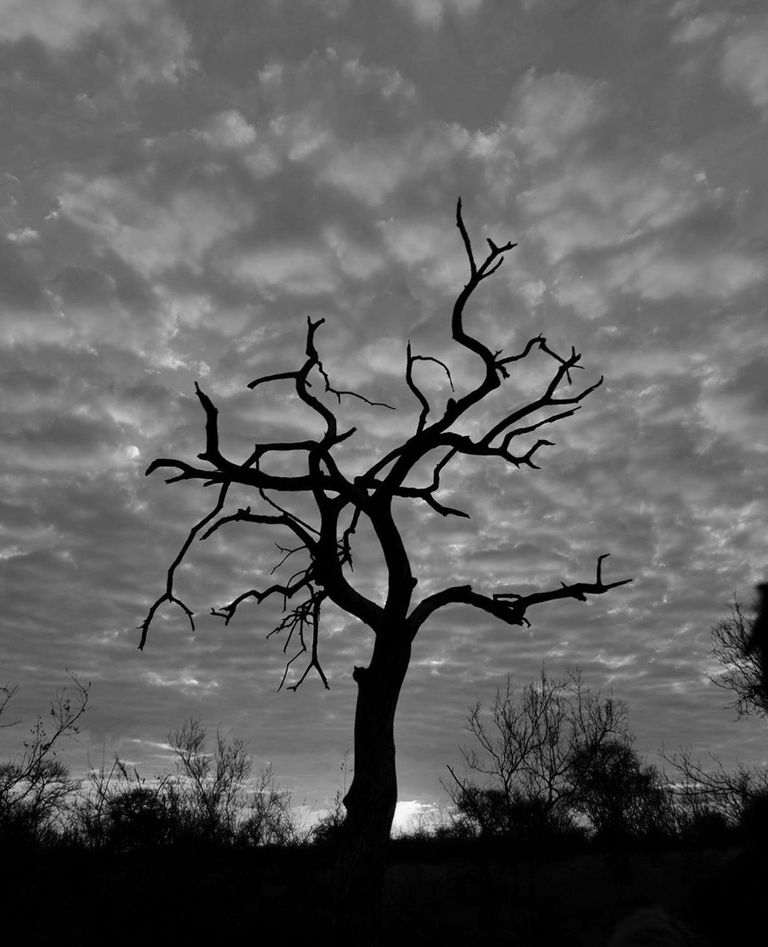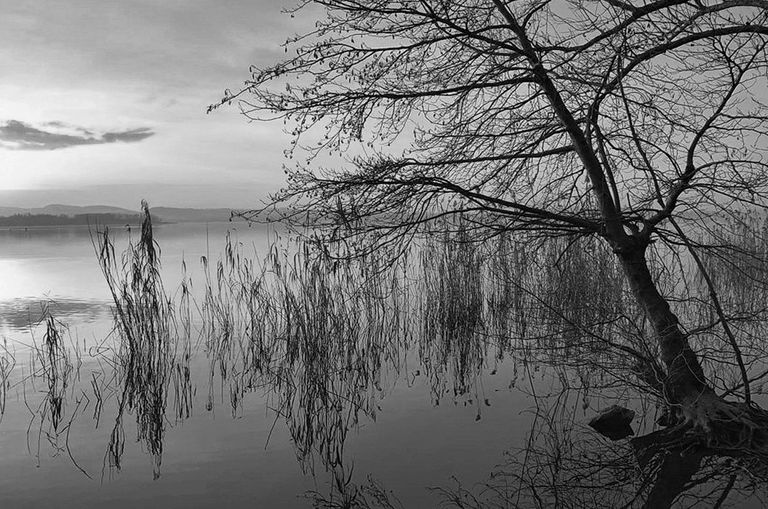Bare trees, stripped of their leaves and life-like fullness, carry a haunting elegance that is both beautiful and unsettling. When captured in black and white, their skeletal forms stand out even more starkly against the sky, creating an atmosphere that feels timeless, mysterious, and deeply emotional. The contrast of light and shadow emphasizes their intricate branches, evoking a range of feelings—from awe and tranquility to eeriness and melancholy.





The Beauty of Bare Trees in Monochrome
Bare trees have a unique kind of beauty that is magnified when viewed in black and white. Their branches, devoid of leaves, reveal their true form, showcasing nature's architectural brilliance.
Visual Elegance: Without the distraction of color, the stark lines and textures of bare trees become the focal point. The black and white palette enhances their symmetry, patterns, and natural flow, making them appear like works of art.
Symbolism of Resilience: Bare trees often symbolize endurance, as they stand tall even in harsh winters, waiting for spring to renew them. In black and white, this symbolism becomes more profound, as their stark silhouettes appear both fragile and strong.
Mood and Serenity: A single bare tree against a gray sky can evoke feelings of peace and stillness. The simplicity of black and white eliminates visual noise, allowing viewers to connect deeply with the scene’s quiet beauty.
Artists and photographers have long used bare trees as subjects to convey solitude, reflection, and the passage of time. The absence of vibrant hues encourages observers to find beauty in the details and in what is often overlooked.





The Scariness of Bare Trees in Black and White
While bare trees can be beautiful, they also carry an unsettling, eerie quality when captured in black and white. Their stripped-down forms, often associated with desolation and decay, can spark feelings of fear or unease.
Haunting Silhouettes: In a monochrome setting, the dark outlines of bare trees against pale skies can appear ghostly, resembling twisted shapes or shadowy figures. These silhouettes are often seen in horror films and literature as symbols of isolation, death, or the unknown.
The Atmosphere of Abandonment: Bare trees in black and white can evoke a sense of abandonment, as they appear lifeless and forgotten. The absence of leaves makes them seem vulnerable, adding to the chilling, almost post-apocalyptic mood they create.
Connection to Nightmares and Stories: Culturally, bare trees are often tied to frightening imagery, such as haunted forests or barren landscapes in ghost stories. In black and white, these associations are heightened, creating an ominous and surreal feeling.
The shadows created by their twisted limbs can give an illusion of movement, as if the trees themselves are alive, watching or reaching out—an effect that stirs primal fears within us.





The Dual Nature of Bare Trees
What makes bare trees so compelling in black and white photography or art is their ability to embody both beauty and scariness simultaneously. This duality reflects the contrasts present in life itself—light and dark, calm and chaos, life and death.
Seasonal Metaphor: Bare trees remind us of the cycles of life. While they may appear lifeless in winter, they hold the promise of spring’s rebirth. The beauty lies in their endurance, but the starkness of their winter form can also serve as a reminder of mortality and change.
Artistic Expression: Artists and photographers embrace bare trees in black and white because they can evoke different emotions depending on the perspective. A single tree in an open field may feel peaceful and reflective, while a dense, shadowy forest of bare trees may seem foreboding.





Conclusion
Bare trees in black and white are a powerful representation of nature’s complexity, capturing both beauty and scariness in their skeletal forms. The monochrome palette strips away distractions, leaving viewers to see their raw elegance and eerie atmosphere. Whether admired for their resilience or feared for their haunting silhouettes, bare trees evoke a sense of wonder and introspection, reminding us of nature’s ability to reflect both life’s fragility and its enduring strength. Their stark and timeless beauty ensures they remain a captivating subject in art, photography, and the human imagination.





Congratulations, your post has been upvoted by @dsc-r2cornell, which is the curating account for @R2cornell's Discord Community.
Enhorabuena, su "post" ha sido "up-voted" por @dsc-r2cornell, que es la "cuenta curating" de la Comunidad de la Discordia de @R2cornell.